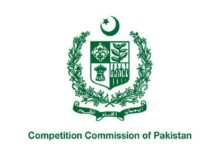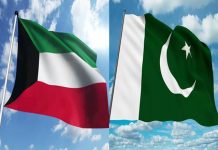As a pure imaginary, Naya Pakistan promised to be an era of institutional change and economic prosperity. From a political economy point of view, Naya Pakistan had one unique advantage that not many governments in Pakistan enjoyed: it was premised on a cooperative new political coalition; a “hybrid” power-sharing arrangement between the civilian government and the establishment, a new ‘political settlement’ that promised sustained institutional transformation and rapid economic development.
The proof of the pudding is in the eating. Leaving the lofty promises made at its inception aside, what can one objectively say about the economic performance and legacy of Naya Pakistan (2018-2022)? While a lot has been written in recent months on inflationary pressures during this period, a lot less attention has been paid to the issue of economic output. Specifically, what can one say about the evolution of the fundamental measure of the health of any economy – output per capita – under the institutional setup of Naya Pakistan? The answer hinges on three major issues. Since these issues will ultimately shape the contentious discourse around the economic performance of Naya Pakistan, it is important to lay them out clearly before proceeding to see what the data suggests. In this article, for reasons described below, I offer readers a comparative/counterfactual approach by comparing the performance of Naya Pakistan with two regional economies (India and Bangladesh) during the same period.
To read the full article, subscribe and support independent business journalism in Pakistan
The content in this publication is expensive to produce. But unlike other journalistic outfits, business publications have to cover the very organizations that directly give them advertisements. Hence, this large source of revenue, which is the lifeblood of other media houses, is severely compromised on account of Profit’s no-compromise policy when it comes to our reporting. No wonder, Profit has lost multiple ad deals, worth tens of millions of rupees, due to stories that held big businesses to account.
Hence, for our work to continue unfettered, it must be supported by discerning readers who know the value of quality business journalism, not just for the economy but for the society as a whole.


























As a pure imaginary, Naya Pakistan promised to be an era of institutional change and economic prosperity. From a political economy point of view, Naya Pakistan had one unique advantage that not many governments in Pakistan enjoyed: it was premised on a cooperative new political coalition; a “hybrid” power-sharing arrangement between the civilian government and the establishment, a new ‘political settlement’ that promised sustained institutional transformation and rapid economic development.
While the govt inherited a difficult economy, however Covid pandemic actually provided the country a breathing space with partial debt restructuring. However the mismanagement of the economy and the governance, especially in Punjab has left a bitter taste for the PTI voters. Moreover the sensational announcements by the PM such as ‘oil discovery at Kekra (if anyone still remembers)’, providing subsidized poultry to families to resolve their economic issues, constantly lecturing people on other country that he is a encyclopedia of knowledge about their own country and so on a so forth. His stubbornness not to remove Usman Buzdar coupled with long amnesty schemes made the economic situation worse.
Those who follow FALSE and EVIL god “allah” always face defeat, degradation, Pennury, Backwardness, violence and failure.
With all due respect to Dr. sb , but i was expecting a deep down economic analysis when he framed the problem with 3 discussion points, but unfortunately, the article has ended up with comparing graphs pre, and post covid. The analysis in general is something which even a analyst with non-economics background would conclude. Some economic intricacies and interdependence of three discussion points and a small economic learning lesson would have suited a person of Author’s stature. An utter waste of time.
Nice blog.Thank you so much for sharing this amazing information with us.
온라인 카지노
j9korea.com